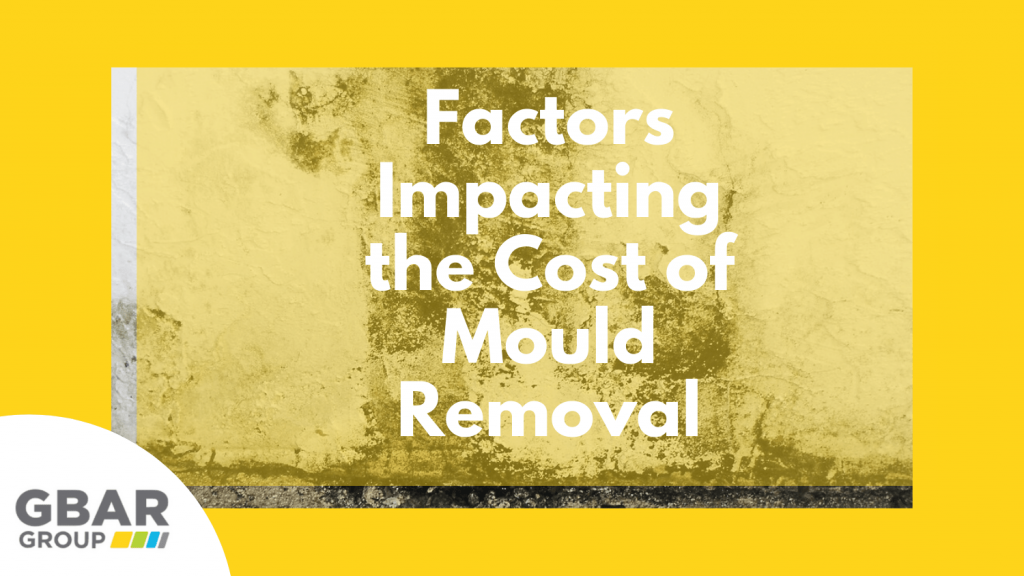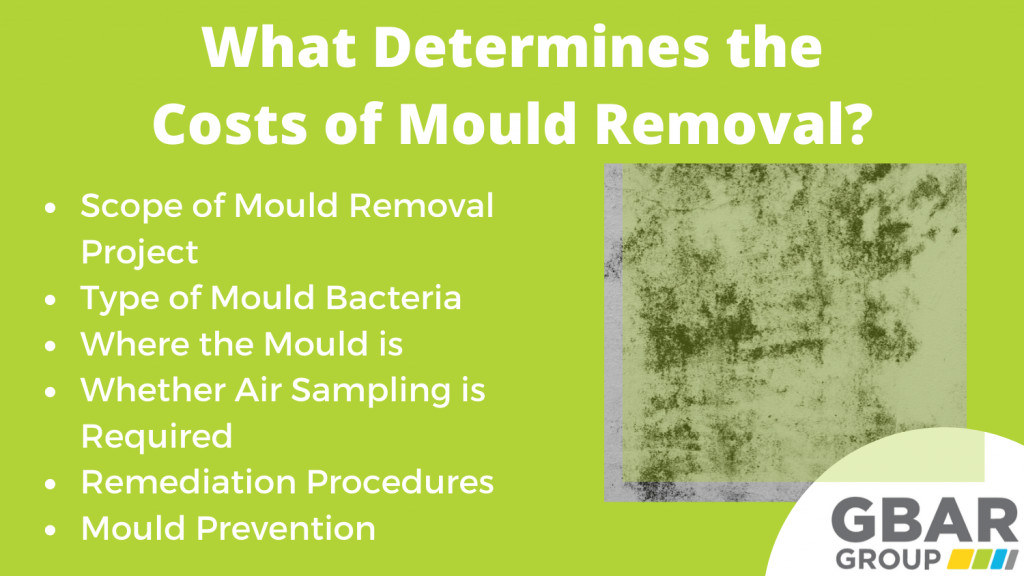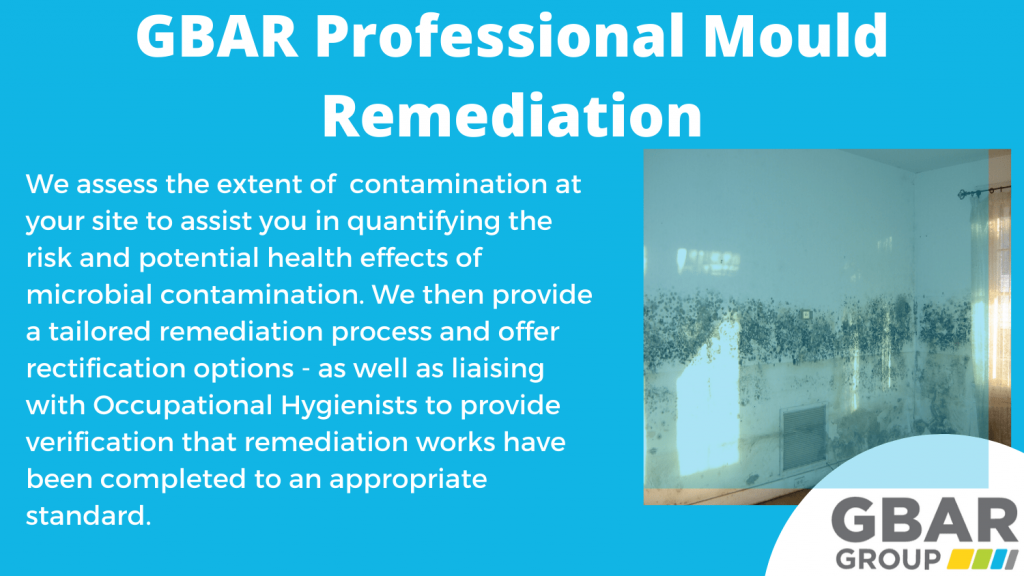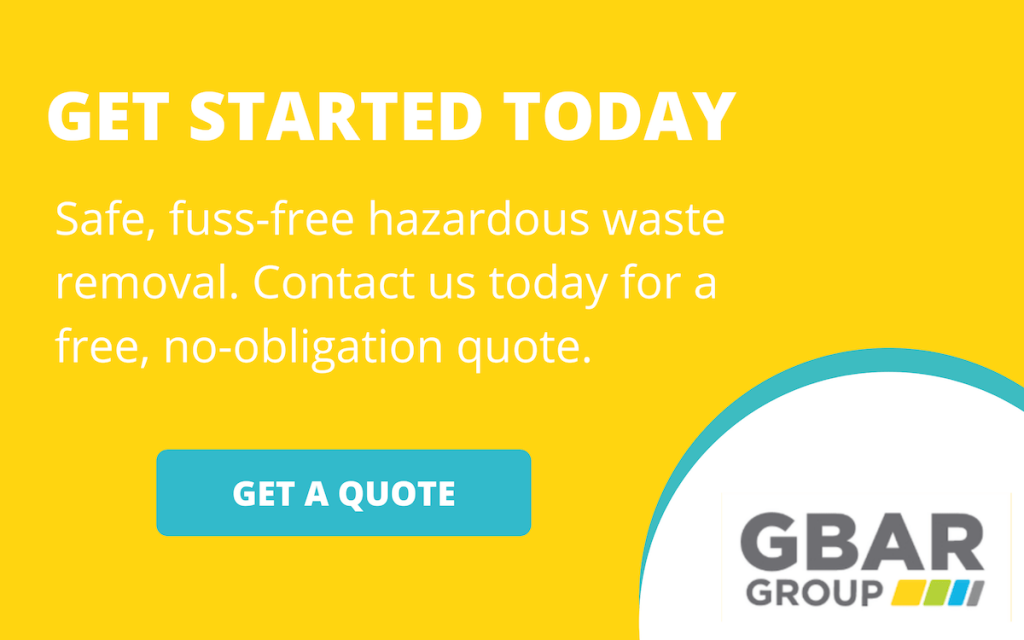
A simple guide to understanding the factors impacting the cost of mould removal in Australia.
Mould is a common household problem faced by property owners across Australia. Mould bacteria thrive in environments with high humidity and are often caused by condensation, water leaks, lack of ventilation, or moisture in the air.
Small mould outbreaks can be harmless and will merely require minor work to prevent and treat small patches of mould fungus. However, extended inhalation of mould fragments or spores can inflame the airways, cause nasal congestion, wheezing, chest tightness, and coughing. Prolonged exposure to high levels of mould bacteria can result in mould poisoning; which will negatively decrease lung function and lead to chronic health concerns such as asthma.
Professional Mould Removal
Once mould contamination begins to pose a genuine threat to the health and safety of a home, property owners need to get in touch with a professional mould cleaning and remediation technician to take care of the infestation. While mould can seem relatively harmless, the threats the bacteria can pose to one’s health are far too great to ignore.
Professional mould removal services rely on a trained technician to safely remove and remediate the affected area. Depending on the nature of the mould, removal costs can vary and are influenced by several factors:

Scope of the Mould
The size of the area that is affected by mould will greatly impact how much the removal will cost. A small mould removal job would typically be less than 10 square feet and will cost significantly less time and money to remediate than a larger affected area.
The extent of the mould is also a major factor for costs – how long the mould has been present and how far it has developed will impact how much work is required. Mould areas that have been neglected and have developed significantly will require more expensive removal services than areas that have just started to grow mould. This is because more work will be required to remove, remediate, and resolve the mould contamination.
Type of the Mould
There are more than 100,000 different types of mould that can grow. Not all types of mould pose a threat; however, there are a few types of bacteria that can cause health concerns when they grow in living spaces. The most hazardous types of mould are:
Alternaria – the most common form of allergenic mould. Alternaria grows wherever dampness occurs; showers, bathtubs, underneath sinks etc.
Aspergillus – a common form of fungus that contributes over 180 species of mould. Aspergillus lives in the environment and comes in many different colours and forms. Most people are immune to the health effects caused by aspergillus; however, it can cause illness resulting in infection in the respiratory system.
Cladosporium – a genus of fungi that includes the most common indoor and outdoor moulds. Species produce olive-green to brown or black colonies and have dark-pigmented conidia that are formed in branched chains.
Stachybotrys – a black mould that thrives in damp, wet areas with high humidity levels. A toxic type of mould that can cause serious allergic reactions. Will often grow on cellulose materials such as timber, cupboard, paper, hay, or wicker.
Acremonium – a type of mould that is known for being slow-growing and gives an unpleasant stench to the surrounding area. Potentially toxic for those who are exposed to it, acremonium typically grows in humidifiers, cooling coils, window sealants and drain pans.

Depending on the type of the mould found on your property, costs can vary enormously. Different bacteria growths can be more difficult to remove than others, requiring increased labour or tools, contributing to a more expensive removal service.
Location of the Mould
The location of a mould infestation is also a factor taken into consideration for removal costs. In areas that are particularly difficult to treat, removal may be more expensive. If affected areas are relatively common and simple to treat, the location should not increase the price of removal.
Mould growth developing in the structural materials of a crawlspace or basement may require special attention, and therefore, more work. These spaces are particularly difficult to not only remove mould but also resolve and remediate. If mould has contaminated areas that are difficult to access or require further safety measures, it may be cost more to remove.
Air Sampling
Air sampling for mould is one way a mould removalist can determine if a property is contaminated. Mould spores are invisible to the naked eye and can be collected in samples with special equipment. If mould bacteria are visibly present, air sampling is not necessary. However, if mould bacteria are suspected but not confirmed, an air sample can be taken by a mould remediation technician and sent to a laboratory. Whether a property requires an air sample or not can influence the overall costs of mould removal.
Mould Remediation
Mould removal companies will use different types of mould removal practices to remediate affected areas. Common remediation procedures will vary in labour, time, and costs. These include media blasting, chemical wash, physical removal and anti-microbial. Every mould removal project will require different removal methods, which will impact overhead costs.

The typical mould removal process will include inspection, containment, and a thorough clean up. Depending on the procedures used, this may be cheaper than say, the ice blasting method. If there is any restoration work involved in the remediation process, this will also add to the total costs of the project.
Mould Prevention
If the cause of mould growth is flooding or significant moisture infiltration, a property may benefit from mould prevention with drying methods. Ideal for carpeted homes that are susceptible to mould growth, drying a house prevents mould bacteria growth and prevents any further damage being done from moisture. Depending on the nature of mould infestation, mould prevention with drying can end up making the costs of mould removal services more expensive.
Mould removal prices will also vary depending on the prevention methods put in place to avoid the mould regrowing on the property. If multiple surfaces are affected by a mould infestation, a preventative method for ensuring the mould does not come back is to remove mould spores from surfaces through restoration. In less affected mould areas, physical removal of mould may be enough to deter the bacteria from growing back. These procedures will require different amounts of work, and therefore, can influence the cost of mould removal services.
Have Your Property Inspected
Mould is a bacterium that is fairly common to households and properties – especially with Australia’s humid weather conditions. The prices of professional removal services of mould all depend on several factors, as every mould removal project will vary.
The first step to identifying how much mould removal will cost is having your property properly assessed and inspected by a trained mould removal technician. Without distinguishing the scope of the project, a removalist cannot be certain of the work that is required. A GBAR Group mould specialist will be able to provide you with a comprehensive price break down of the cost of mould removal following a visual inspection of the project.






